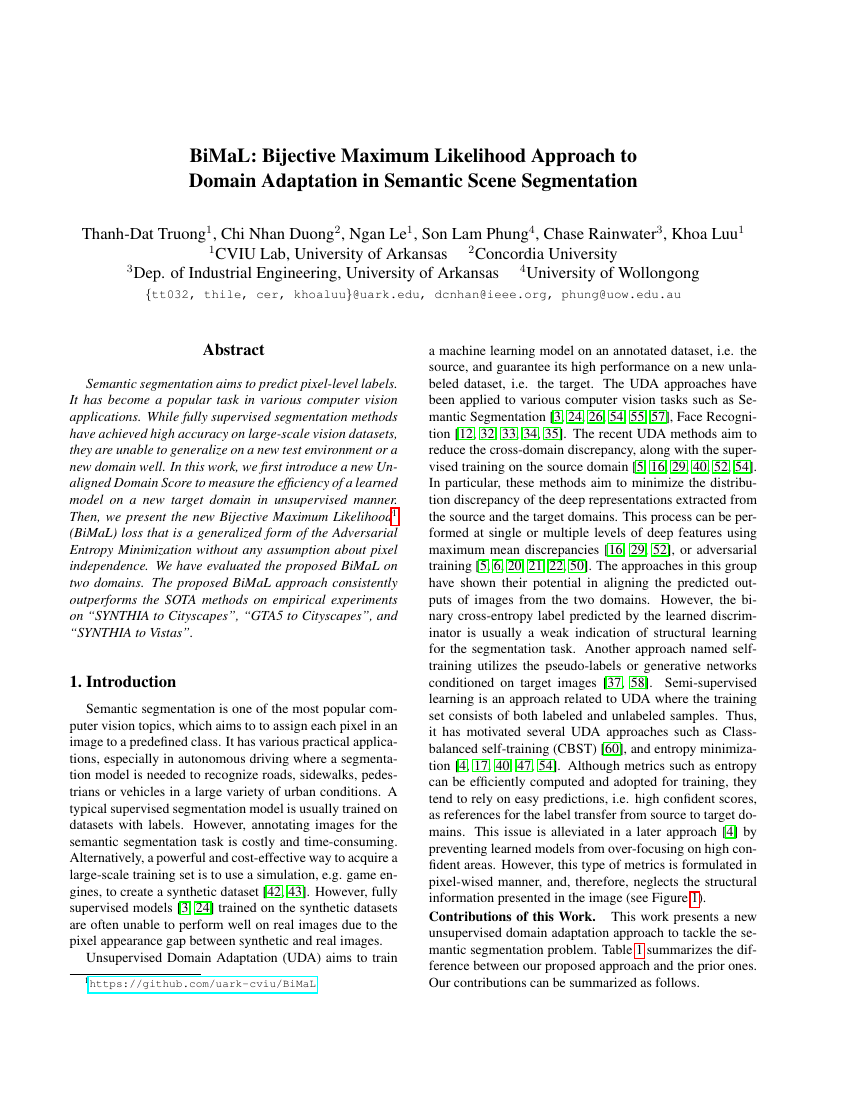Command Palette
Search for a command to run...
BiMaL: Bijective Maximum Likelihood Approach to Domain Adaptation in Semantic Scene Segmentation
Thanh-Dat Truong Chi Nhan Duong Ngan Le Son Lam Phung Chase Rainwater Khoa Luu

Abstract
Semantic segmentation aims to predict pixel-level labels. It has become a popular task in various computer vision applications. While fully supervised segmentation methods have achieved high accuracy on large-scale vision datasets, they are unable to generalize on a new test environment or a new domain well. In this work, we first introduce a new Un-aligned Domain Score to measure the efficiency of a learned model on a new target domain in unsupervised manner. Then, we present the new Bijective Maximum Likelihood(BiMaL) loss that is a generalized form of the Adversarial Entropy Minimization without any assumption about pixel independence. We have evaluated the proposed BiMaL on two domains. The proposed BiMaL approach consistently outperforms the SOTA methods on empirical experiments on "SYNTHIA to Cityscapes", "GTA5 to Cityscapes", and "SYNTHIA to Vistas".
Code Repositories
Benchmarks
| Benchmark | Methodology | Metrics |
|---|---|---|
| domain-adaptation-on-synthia-to-cityscapes | BiMaL | mIoU: 46.2 |
| unsupervised-domain-adaptation-on-gtav-to | BiMaL | mIoU: 47.3 |
Build AI with AI
From idea to launch — accelerate your AI development with free AI co-coding, out-of-the-box environment and best price of GPUs.